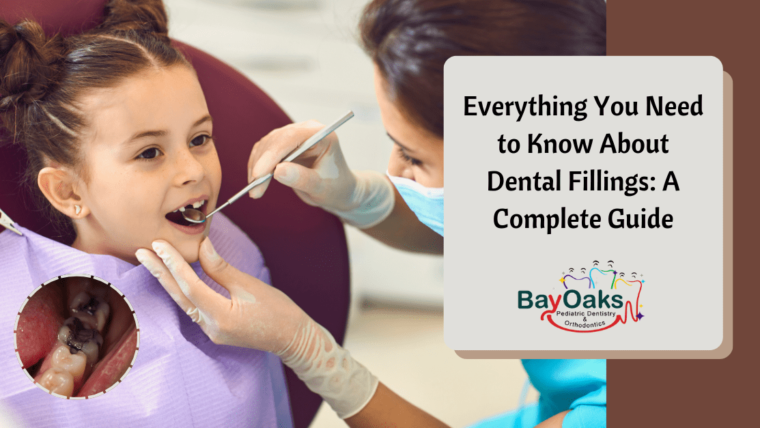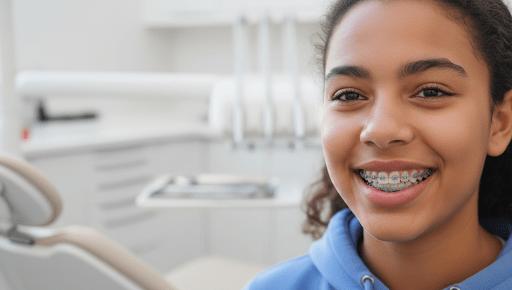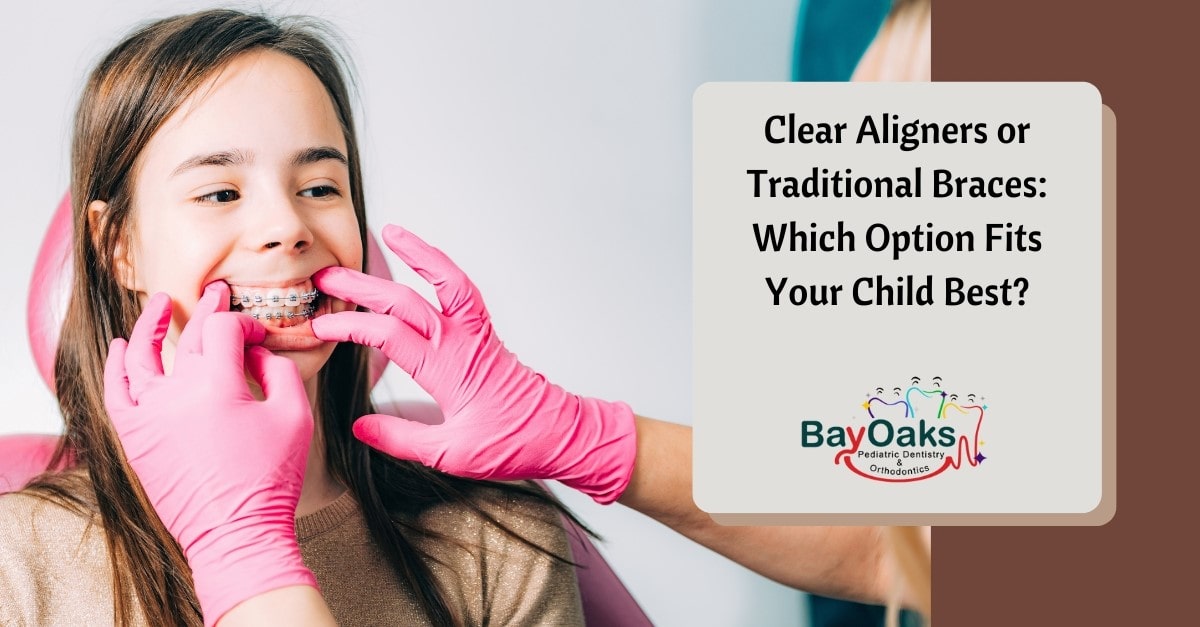
Clear Aligners or Traditional Braces: Which Option Fits Your Child Best?
Clear Aligners or Traditional Braces: Which Option Fits Your Child Best?
When it comes to orthodontic treatment for your child, choosing the right option can feel overwhelming. Clear aligners and traditional braces both have their benefits, but which one is the best fit for your child? At Bayoaks Pediatric Dentistry in Clear Lake City, Houston, we understand that every child is unique. That’s why we’re here to provide you with the information you need to make an informed decision.
In this blog, we’ll explore the key differences, advantages, and considerations between clear aligners and traditional braces to help you determine the best option for your child’s orthodontic journey.
What Are Clear Aligners?
Clear aligners, like Invisalign, are a modern orthodontic treatment option that uses a series of custom-made, removable plastic trays to gradually straighten teeth. These aligners are nearly invisible, making them a popular choice for teens and older children who prefer a more discreet solution.
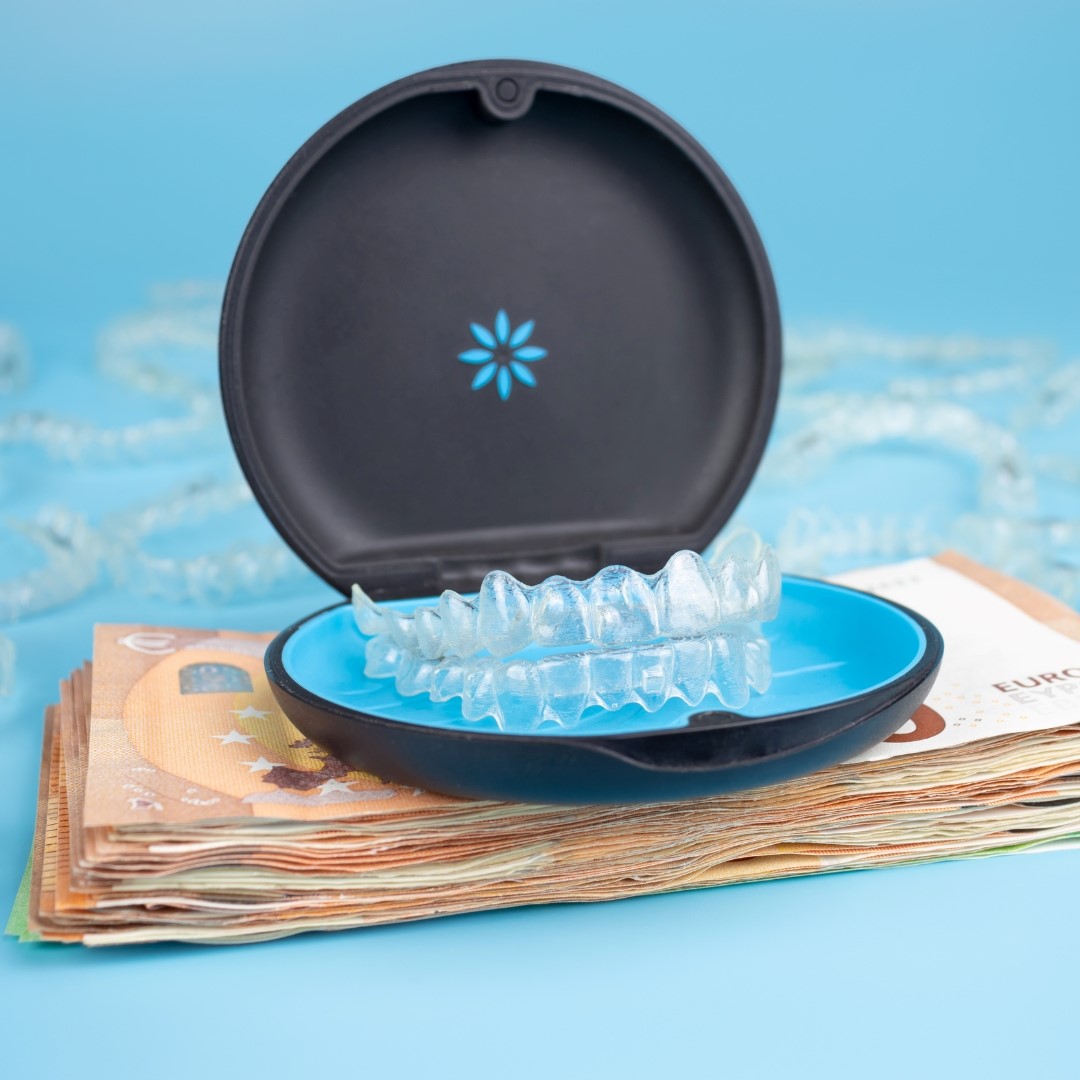
Key Features of Clear Aligners:
- Removable: Aligners can be taken out for eating, brushing, and flossing.
- Aesthetic Appeal: Clear aligners are virtually invisible, offering a subtle look.
- Comfortable: Made of smooth plastic, they reduce the risk of irritation to cheeks and gums.
- Customized: Each set of aligners is designed specifically for your child’s teeth.
What Are Traditional Braces?
Traditional braces use metal brackets and wires attached to the teeth to correct alignment issues. They have been a trusted orthodontic solution for decades and are effective for treating a wide range of dental problems.
Key Features of Traditional Braces:
- Fixed: Braces are permanently attached to the teeth during treatment.
- Durable: They can handle more complex orthodontic issues, such as severe crowding or bite problems.
- Versatile: Suitable for a wide range of dental issues and ages.
- Customizable: Braces now come in various options, including ceramic brackets or colorful bands for personalization.
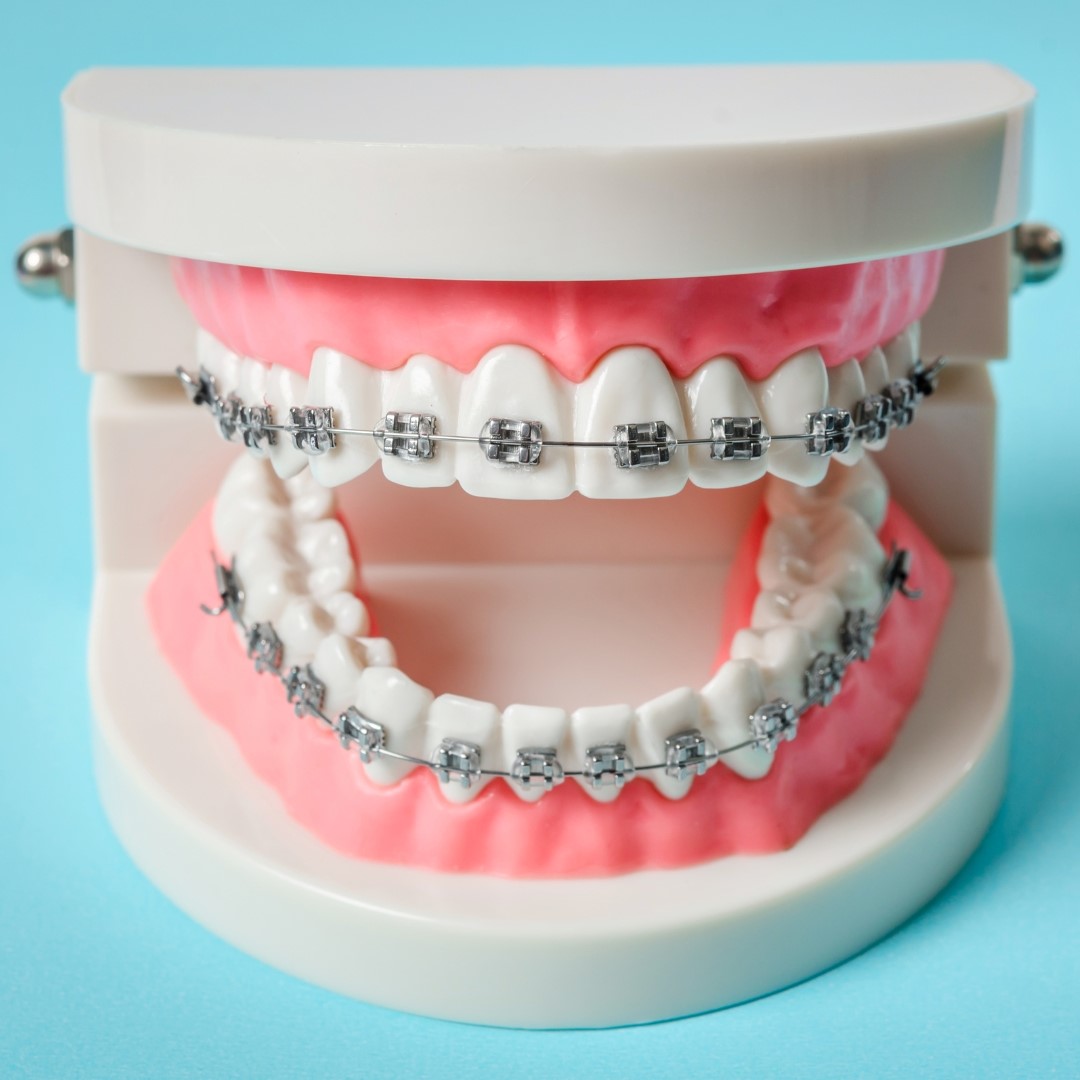
Comparing Clear Aligners and Traditional Braces
To help you decide which option is best for your child, let’s compare the two based on several important factors:
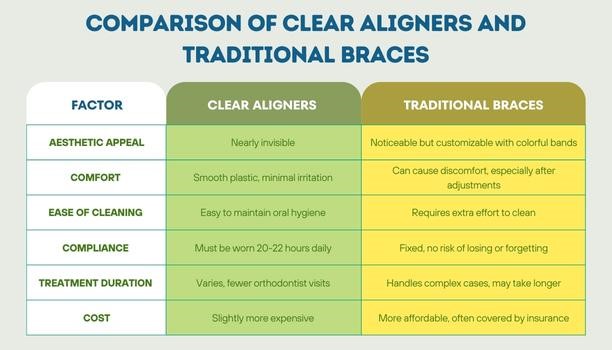
1. Aesthetic Appeal
- Clear Aligners: Clear aligners are nearly invisible, making them a popular choice for children and teens who may feel self-conscious about their appearance.
- Traditional Braces: While metal braces are more noticeable, they can be customized with colorful bands to make the experience more fun for kids.
2. Comfort
- Clear Aligners: Made of smooth plastic, aligners are generally more comfortable and less likely to irritate the cheeks and gums.
- Traditional Braces: WBraces can sometimes cause discomfort, especially after adjustments, and may lead to minor irritation inside the mouth.
3. Ease of Cleaning
- Clear Aligners: Since aligners are removable, it’s easier for your child to maintain their oral hygiene by brushing and flossing as usual.
- Traditional Braces: Braces require more effort to clean, as food can get stuck between the brackets and wires. Special tools like interdental brushes or water flossers can help.
4. Compliance
- Clear Aligners: Aligners must be worn for 20-22 hours a day to be effective. Younger children or those who may forget to put them back in could face delays in treatment.
- Traditional Braces: Since braces are fixed, there’s no risk of losing them or forgetting to wear them, making them a better option for children who might struggle with compliance.
5. Treatment Duration
- Clear Aligners: Treatment time varies depending on the severity of the case, but aligners often require fewer visits to the orthodontist.
- Traditional Braces: Braces can handle more complex cases, but treatment may take longer for certain issues.
6. Cost
- Clear Aligners: Aligners can be slightly more expensive than traditional braces, depending on the complexity of the case and the length of treatment.
- Traditional Braces: Metal braces are generally more affordable and are often covered by dental insurance plans.
Which Option Is Best for Your Child?
The best orthodontic treatment for your child depends on several factors, including their dental needs, lifestyle, and personal preferences. Here’s a quick guide to help you decide:
Clear Aligners May Be Best If:
- Your child wants a discreet, nearly invisible treatment option.
- They are responsible enough to wear aligners consistently for 20-22 hours a day.
- Their orthodontic issues are mild to moderate.
- They prefer the ability to remove aligners for eating and oral hygiene.
Traditional Braces May Be Best If:
- Your child has more complex orthodontic needs, such as severe crowding or bite issues.
- They may struggle with the responsibility of wearing aligners consistently.
- You’re looking for a cost-effective solution.
- They don’t mind the appearance of metal braces or enjoy the idea of colorful bands.
How Bayoaks Pediatric Dentistry Can Help
- Comprehensive Evaluations: We carefully assess your child’s dental needs to determine the most effective treatment option.
- Personalized Care: Our team works closely with you and your child to create a treatment plan tailored to their needs and preferences.
- Ongoing Support: Whether your child chooses clear aligners or braces, we provide guidance and support throughout their orthodontic journey.

The Final Verdict
Both clear aligners and traditional braces are effective options for straightening teeth and improving oral health. The right choice depends on your child’s unique needs, lifestyle, and preferences. By understanding the differences between these options, you can make an informed decision that sets your child up for a lifetime of confident smiles.
At Bayoaks Pediatric Dentistry, we’re here to help you navigate the decision-making process. Contact us today to schedule a consultation and learn more about the orthodontic options available for your child. Together, we can create a plan that fits their needs and helps them achieve the smile they deserve.

